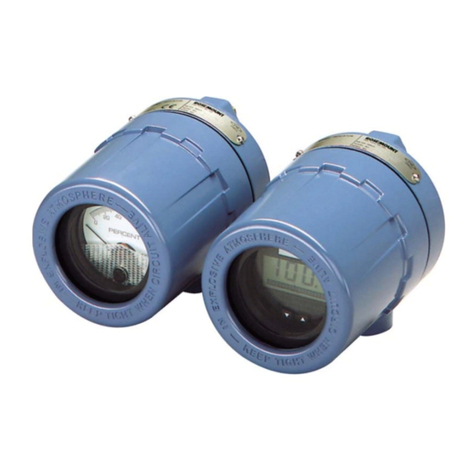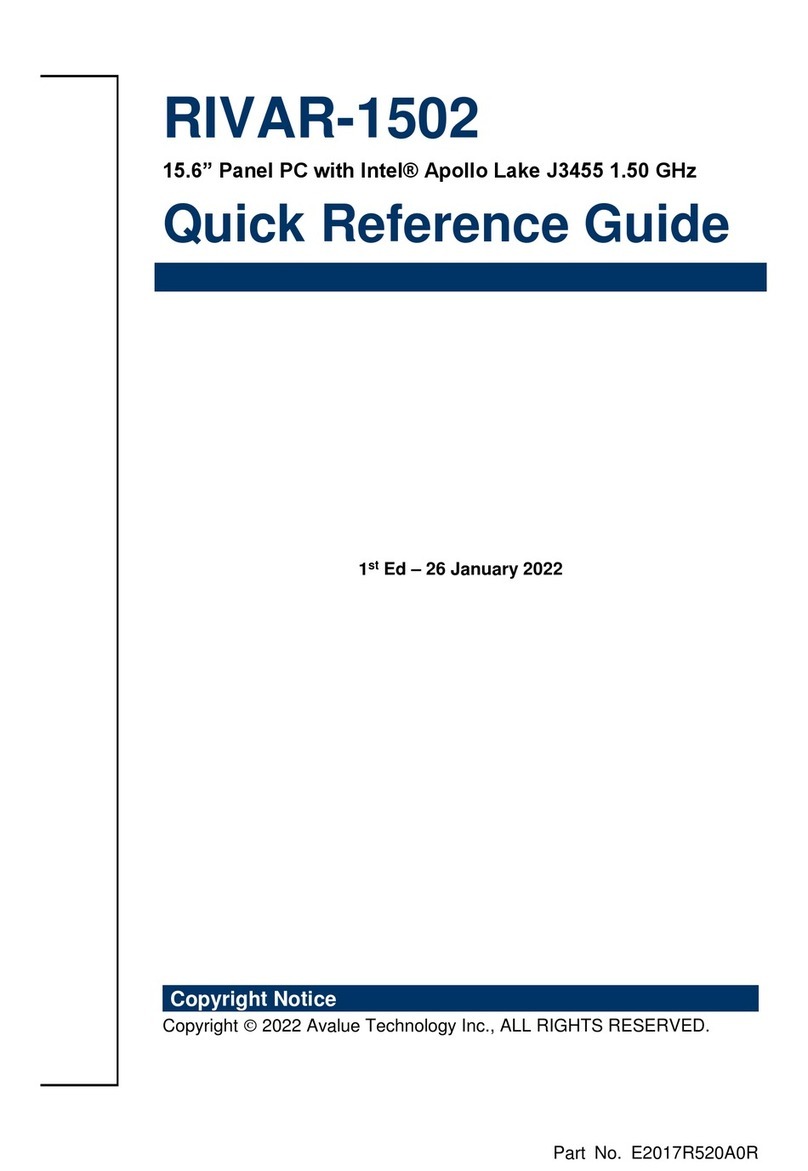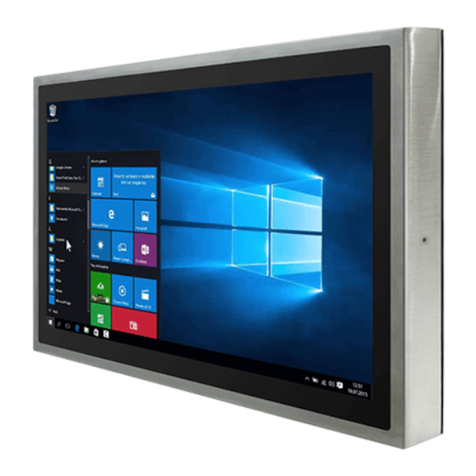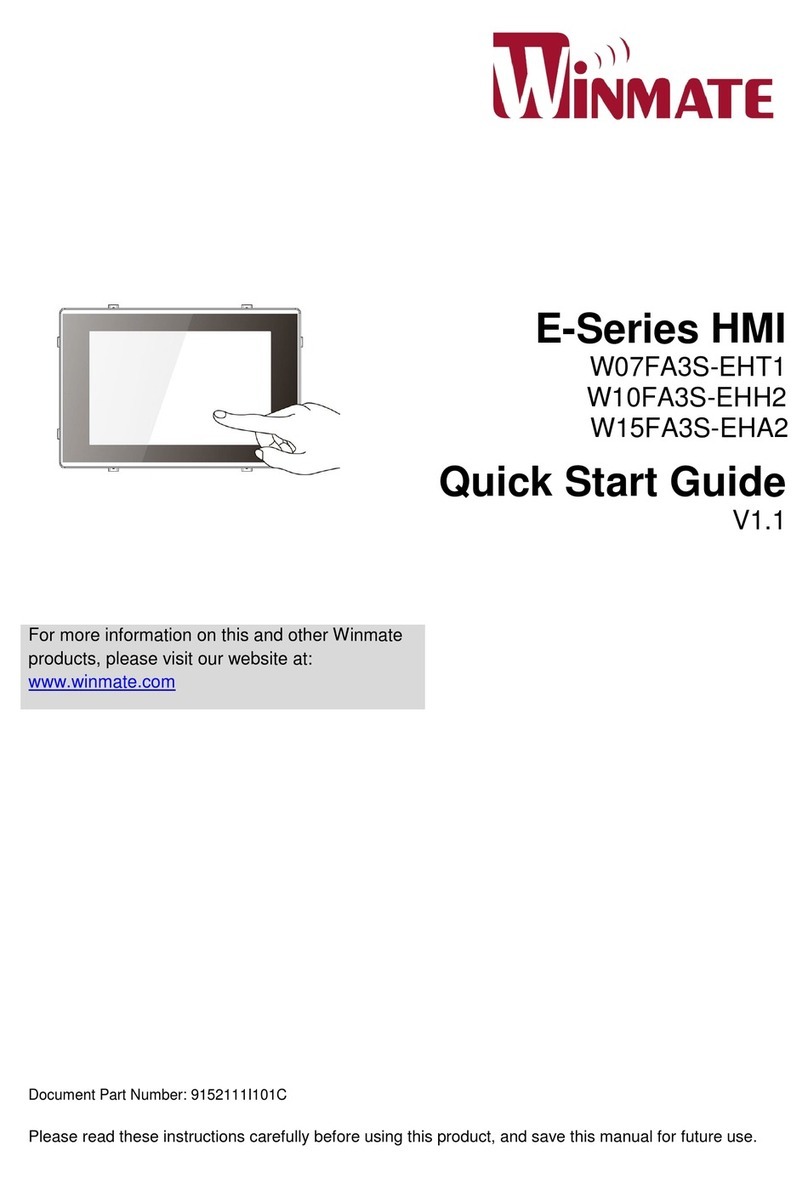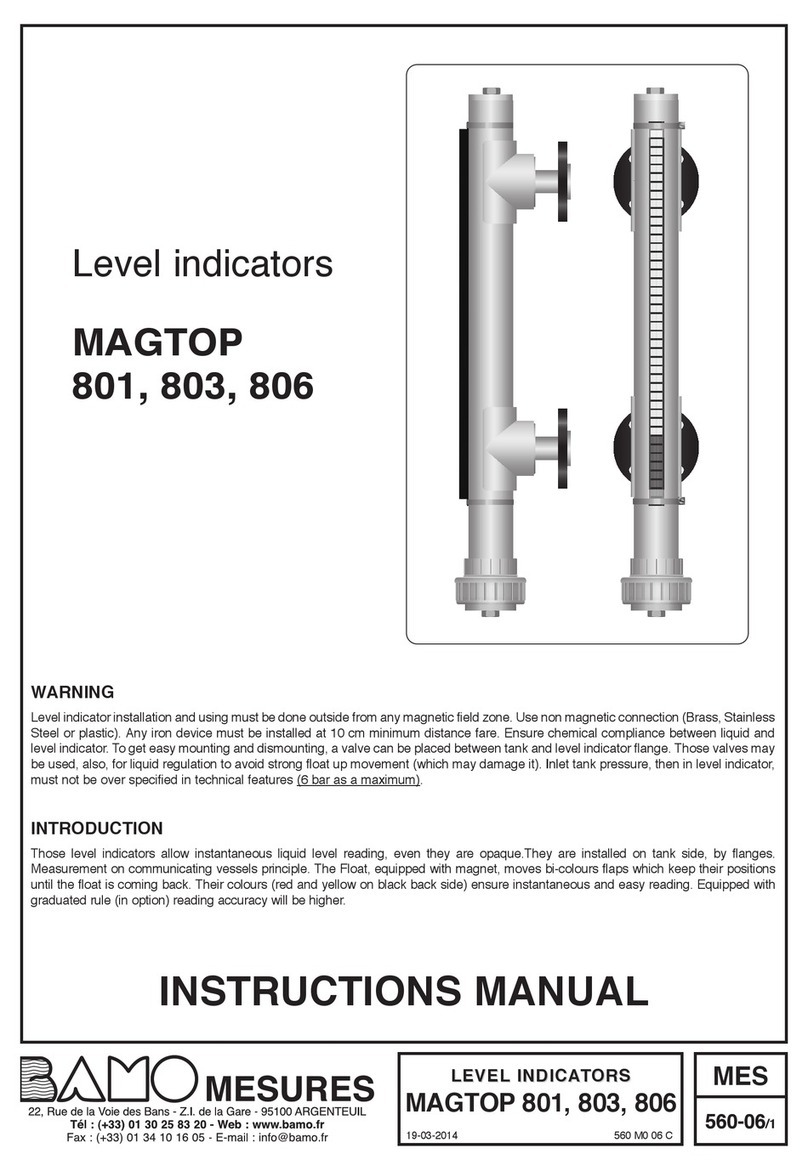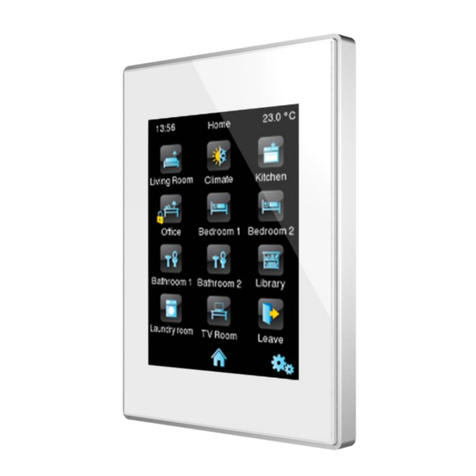Hengstler tico 735 User manual

2 735 021, Rev. 030798 Operating Instructions tico 735 - Position Indicator page 1/11
Operating Instructions tico 735 - Position Indicator
Introduction
Your Hengstler tico 735 Position Indicator is one model in a family of 1/8 DIN units which offers
breakthrough display technology as well as easy-to-program single-line parameters.
Designed to provide instant visual feedback regarding an application’s key input value, the tico 735 not
only has a 18 mm high LED display, but also the ability to change display colour based on process status
(programmable parameter in Operation Mode). Easy programming is made possible via a help function
and a secondary legend display.
This manual will guide you through the installation and wiring of your tico 735 unit with information on
proper panel mounting and rear terminal layout and wiring instructions. In addition, the instrument’s
operation and programming modes are thoroughly explained. The operation mode provides day to day
operation and allows editing of preset values. The Program Mode enables the configuration of various
parameters prior to initial operation. These parameters include
those for basic configuration as well as other settable features
which will enhance the functionality and usability of the device.
This manual also provides information on the tico 735 Position
Indicator’s product specifications and ordering information.
Features
•Awesome 18 mm high digit LED display
•Programmable colour change display based on an event
•Programmable help function and secondary legend display
•High and low alarm outputs
•Optional linear output relative to position
•Filter speed settable 20 Hz, 200 Hz, or 10 kHz
•Standard outputs: 2 NPN transistors & 1 relay (optional 2nd relay)
•Front panel reset enable and preset/alarm lockout
•Optional RS-485 plug in card
Index
Safety Instructions...........................................................................................................................2
Installation........................................................................................................................................3
Panel mounting.........................................................................................................................3
Wiring........................................................................................................................................4
Operation.........................................................................................................................................5
Front Panel...............................................................................................................................5
Operation Mode........................................................................................................................6
Program Mode.................................................................................................................................7
Entering Program Mode and basic operation............................................................................7
Program Parameter Sequence .................................................................................................7
Technical Data...............................................................................................................................10
Ordering Information...............................................................................................................11

2 735 021, Rev. 030798 Operating Instructions tico 735 - Position Indicator page 2/11
Safety Instructions
This symbol indicates passages in the text which you have to pay special
attention to so as to guarantee proper use and preclude any risk.
•The range of applications for this product are industrial processes and controls, where the
overvoltages applied to the product at the connection terminals are limited to values of the
overvoltage category II.
•This device is made and tested according to the valid standards of technics and has left the
factory in a perfect safety state. To keep this state and secure operation without danger, the user
has to observe the saftety and warning hints, contained in this operation manual.
•Assembling and mounting of electrical divices are restricted to be done by skilled electricians!
Skilled electrician is, who can judge the tasks deputed to him and foresee possible dangers, due
to his special education, knowledge and experience and consciousness of the pertinent
standards.
•Mount devices are only allowed to be operated when mounted.
•Finger protection at connection part of mount devices is to be secured when mounting!
•While mounting the device, it must be secured that the requirements, which are asked for the
device in the pertaining standards for safety, are not affected in a negative way, so reducing the
safety of this mount device.
•Mounting and assembling of device needs observation of the specifications of the local Energy
Suppliers.
•Before switching on, make sure that the power and control voltages are not exceeding the values
in accordance with the technical data.
•If it is to be assumed that operation without danger is not further possible, the device must be put
out of operation and secured from unintentional operation! It must be assumed that an operation
without danger is not further possible,
if the device shows damage
if the device stops functioning
after a longer stocking period under unfavourable conditions
after heavy strain during transportation.
•If by a failure or a malfunction of the device, endangering of men or animals or damaging of
facilities are possible, this must be avoided by additional safety measures (end switches,
protection devices and etc.).
•Before opening any cover, the device must be switched voltagefree.
•Hengstler Counters are intended for industrial applications.
•The mounting environment and nearby cabling have an important influence on the EMC (noise
radiation and noise immunity) of the counter. When putting into operation, the EMC of the whole
installation (unit) has to be secured. In particular, the relay outputs are to be protected from high
noise radiation by suitable wiring.

2 735 021, Rev. 030798 Operating Instructions tico 735 - Position Indicator page 3/11
Installation
Panel mounting
The instrument can be mounted in a panel with a thickness of up to 12 mm. The cutout should be made based
on the recommended panel opening illustrated in the drawing below.
10096
48
tico 735
PGM RST
92
+ 0.5
45
+ 0.5
Panel Cutout
Insert the unit in the panel through the cutout. Ensure that the panel gasket is not distorted and the instrument is
positioned squarely against the panel. Slide the mounting clamp into place on the instrument and push it
forward until it is firmly in contact with the rear face of the mounting panel and the tabs on the bracket arm are
seated in the mounting grooves on the side of the unit.
The electronic components of the instrument can be removed from the housing after installation without
disconnecting the wiring. To remove the components, grip the side edges of the panel and pull the instrument
forward. Take note of orientation of the unit for subsequent replacement in the housing.

2 735 021, Rev. 030798 Operating Instructions tico 735 - Position Indicator page 4/11
Wiring
Rear Terminal
Connections
0 V
CTRL 1
CTRL 2
0 V
Input A
Input B
NC
Linear
Output
+
-
NC Relay
OUT2
OUT1
NPN
OUT2
NPN
Aux.
Power
28 73
13 14 15 16 17 18 19 20 21
22
23
24
1
654
9
10
11
12
B - A +
(+) RS 485
Power Supply 0V
(-)
~~Relay OUT1
Danger! Hazardeous
voltage!
Count Inputs
Terminal #2 is the connection for Input A, which is
used for channel A of an encoder input. Terminal #1 is
the connection for Inut B which is used for channel B of
an encoder input. The common connection for both
input A and input B is terminal #3.
Control/Digital Inputs
A contact closure or NPN signal can be used to
activate preconfigured functionality. Terminal #5 is
used for a remote reset function, while terminal #6 is a
security function, that when active, will prohibit entry
into Program Mode. Terminal #8 serves as the
common for both of these inputs.
Auxiliary Power Output
A 9-15 VDC for powering external sensors and
encoders up to 125 mA can be accessed by
connecting the positive supply side of the sensor to
Terminal #4 and the negative side to Terminal #8.
Linear Output
An option board may be installed that provides a 10 bit
linear output signal relative to the Position Value.
Terminal #12 is the positive side of the connection, and
Terminal #10 is the negative side. The default range of
the input is 4-20mA but can be changed via the front
panel to 0-20 mA, 0-10 VDC, 2-10 VDC, 0-5 VDC, or
1-5 VDC.
Power Supply Input
For an AC powered unit, Terminal #13 serves as the line
or hot side connection for AC powered units and as the
positive side for DC powered units. The neutral side for
AC powered units and the negative side for DC powered
units are connected to terminal #14.
Transistor Outputs
Your unit comes standard with 2 NPN outputs which are
activated by each of the alarms. Transistor Output 1,
which is tied to the High Alarm Value, is on Terminal #7.
Transistor Output 2, which is tied to the Low Alarm
Value, is on Terminal #9. Terminal #8 serves as the
common connection for both transistor outputs.
Relay Outputs
Your unit comes standard with a relay output which is
tied to the High Alarm Value. Terminal #19 is NC,
Terminal #20 is common, and Terminal #21 is NO. A
second relay output tied to the Low Alarm Value can be
added as an option at the time of order or later installed
in the field. Terminal #22 is NC, Terminal #23 is common
and Terminal #24 is NO.
Serial Communication
An RS-485 communication board, utilizing ASCII
protocol, can be installed as an option. Terminals #16
and #17 serve as the B and A connections respectively,
while terminal #18 is connected as the common.
Terminals 11 & 15 are not used and must not
be connected!

2 735 021, Rev. 030798 Operating Instructions tico 735 - Position Indicator page 5/11
Operation
Front Panel
Output
Indicators
Primary
Display
Secondary
Display
Down Scroll Program Reset
Key functions
Key
Function
Down
In
Operation Mode:
Used in Edit Operation
to decrement the digit highlighted by the
Scroll Key.
In
Program Mode:
Used in Edit Operation
to decrement the digit highlighted by the
Scroll Key, if the setting is a numerical
value, or present the next in the series of
choices for that parameter.
Scroll
In
All Modes:
Moves the unit into Edit
Operation, which is indicated by the left
most digit flashing. Successive presses of
the key are used to move to the digit to be
edited. Wrap around will occur from least
significant digit to most significant digit.
Program
In
Operation Mode:
Used to move between
the position display & the alarms and to
enter an edited alarm value. Holding the
key down for 3 seconds will cause the unit
to enter Program Mode.
In
Program Mode:
Used to move from one
parameter to the next and enter the edited
parameter values. Holding the key down for
3 seconds will cause the unit to return to
Operation Mode.
Reset
In
Operation Mode:
Resets the position
display to zero (under Reset Value in
Program Mode). This button can be
disabled via the „Front Panel Reset Enable“
parameter in Program Mode.
In
Program Mode:
No function
Down &
Scroll
In
All Modes:
Will abort an Edit Operation
and return the preset/parameter to its
previous value.
Display functions
Display
Function
Primary
In
Operation Mode:
Default display is the
position. Can be scrolled using the
program key to display the alarm values.
If the „Help“ function is enabled, this
display will first show the parameter
description for 3 seconds ( see page 5 for
example).
In
Program Mode:
Displays the value or
selection for the current parameter. If the
„Help“ function is enabled, this display will
first show the parameter description for 3
seconds ( see page 6 for example).
Secondary
In
Operation Mode:
Indicates
alphabetically if one of the alarms is
being viewed on the primary display. This
display is blank when Position is being
shown.
In
Program Mode:
Provides a 1 digit
alpha or numeric character to indicate
which parameter value is being shown on
the primary display.
Output
indicators
illuminates when the High Alarm Value
is reached (OUT1)
illuminates when the Low Alarm Value
is reached (OUT2)

2 735 021, Rev. 030798 Operating Instructions tico 735 - Position Indicator page 6/11
Operation Mode
Changing a Preset value (example)
Default display is the position
value.
),C
Pressing the Program Key will
cause the display description to
appear on the main display.* If
there is no key activity for 3
seconds, the primary display will
switch back to the count value.
$ '
Continued pressing of the
Program Key will scroll to the
Alarms. (see parameter
sequence below.) The full
parameter description will appear
on the main display.*
O
$
To change the Alarm value,
press the Scroll Key. If there was
no key activity for 3 seconds, the
Alarm value will appear (one digit
description shown on secondary
display); however, press the
Scroll Key in order to edit. The
unit will now be in Edit Operation
as signified by the most
significant digit flashing.**
P
$
Use the Scroll Key to move from
left to right and highlight the digit
that needs to be changed. Wrap
around will occur from the least
significant to the most significant
digit.
O
$
Use the Down Key to decrement
the digit until the desired value
appears. The display will wrap
around from 0 to 9.
$ '
After the desired digits have been
changed, press the Program Key
to enter the new value. The new
value will appear on the main
display without any flashing
digits. Press the Program Key
again and the parameter
description will appear on the
main display.
* Parameter descriptions will not appear on the
primary display if the „Help“ function has been
disabled
** Edit Operation cannot be accessed if the Preset
Lock has been enabled in Program Mode
Display Parameter Sequence
),C
Position
Function
: Displays the position
value.
Display Range:
-19999 to 99999
' '
'
Low Alarm Value
Function
: Defines the position
value at or below which Alarm 2
will activate.
Adjustm. Range
:-19999 to 99999
Default Value
: 10
$ '
$
High Alarm Value
Function
: Defines the position
value at or above which Alarm 1
will activate.
Adjustm. Range
: -19999 to 99999
Default Value
: 1000

2 735 021, Rev. 030798 Operating Instructions tico 735 - Position Indicator page 7/11
Program Mode
Entering Program Mode and basic operation
The Program Mode can be
accessed from the Operation
Mode by holding the Program
Key for 3 seconds.
⇑⇓
for 3 secs.
The Program Mode can be exited by holding the Program
Key for 3 seconds or remove power from the unit and
repower it.
After 90 seconds of key inactivity the unit returns to
Operation Mode automatically.
The name of the first parameter
will appear on the primary
display.*
Successive presses of the
Program Key will scroll the
display through the remaining
parameters in the Program
Mode. To exit Program Mode,
hold the Program Key for 3
seconds.
* Parameter names will not
appear on the main display if
the „Help“ function has been
disabled in Program Mode
3'
= N )
3 secs. or
⇒
⇐
Edit Operation
Q
R
Pressing the Scroll Key or no key activity
for 3 seconds will display the value for that
parameter. The secondary display will
indicate the one digit identifier for the
parameter. The digit in the secondary
display will flash to indicate the unit is in
Program Mode. If the Scroll Key was
pressed (instead of waiting 3 seconds), the
unit is in Edit Operation, as indicated by the
MSD flashing. If there had been no key
activity for 3 seconds, press the scroll key
to enter Edit Operation (MSD flashing). Use
the scroll and edit keys to change the value
as in Operation Mode, described on page 5.
Press the Program Key to enter any
changes.
Program Parameter Sequence
3'
N
Calibration Factor
Function
: Scales the input into engineering units by multiplying this value by the number of pulses
received.
Adjustment Range
: 0.0001 to 9.9999
Default Value
: 1.0000
= N )
=
Decimal Position
Function
: Set the decimal point position for the position and alarm displays
Adjustment Range
: 0 (no dp) to 0.0000
Default Value
: 0 (no dp)
*!,!/
Reset Value
Function:
Defines a home position by selecting a value other than zero or another value
within the displayed range of the device to which the counter can reset
Adjustment Range:
-19999 to 99999
Default Value:
0

2 735 021, Rev. 030798 Operating Instructions tico 735 - Position Indicator page 8/11
-) =
"
Filter Speed
Function
: Enables the debounce filter of the counter to properly match the application.
Note: the sum of both input frequencies should not exceed 10 kHz, i.e. you can apply up to 5kHz
channel frequency.
Adjustment Range:
T
20: The unit will accept
up to 20 pulses per
second. Generally
used with contact
inputs to eliminate
false counts caused by
contact bounce
T
200: The unit will accept
up to 200 pulses per
second. Generally used
for higher speed contact
inputs or to filter noise
on electronic signals in
low speed applications
T
10,000: The unit will
accept up to 10,000
pulses per second.
Generally used with
high speed electronic
inputs and encoders
Default Value
: 10000
+- C
+
Front Panel Reset Enable
Function
: Determines whether the Front Panel Reset key can be used to reset the
position value.
Adjustment Range:
C
C
+
Enable: The position
value can be reset
while being viewed in
Operation Mode by
pressing the Front
Panel Reset Key
=-
+
Disabled: The Front
Panel Reset Key is
disabled and the
position value can only
be reset through the
Remote Reset Input
Default Value
: Enable
+/ C
/
Retransmission Enable/Select
Function
: Determines whether a voltage/current is an output, and if so, which range. A
jumper on the output module determines whether it outputs current or voltage.
Adjustment Range:
CC!
CC!
/
None
Default Value:
None
1
/
1
/
0-5 or 1-5 Volts
1
/
1
/
0-10 or 2-10 Volts
/
/
0-20 mA, 4-20mA
+/ '
'
Retransmission Scale Minimum(Appears only if a current/voltage is selected)
Function
: Defines the lower end of the linear scale for the retransmission output by
defining the value equated to the minimum output signal.
Adjustment Range:
-19999 to 99999
Default Value:
0
+/ $
$
Retransmission Scale Maximum (Appears only if a current/voltage is selected)
Function
: Defines the upperer end of the linear scale for the retransmission output by
defining the value equated to the maximum output signal.
Adjustment Range:
-19999 to 99999
Default Value:
100

2 735 021, Rev. 030798 Operating Instructions tico 735 - Position Indicator page 9/11
3DE,
N
Serial Communication enabled (Appears only if communication board is installed and
activated
Function
: Activates the RS-485 communication option board.
Adjustment Range
CC
N
None: no communica-
tion board installed
"/
N
Fitted: A communica-
tion board is installed in
the unit
Default Value
: If ordered from the factory
with the RS-485 board, the default will be
„Fitted“. If the board is installed in the field,
this parameter will need to be changed
fromt its default of „none“.
==+
Communication Address
(Appears only if communication board is installed and activated)
Function
: Defines the unique communication address of the unit
Adjustment Range
: 1 to 99
Default Value
: 1
1=
Baud Rate
(Appears only if communication board is installed and activated)
Function
: Selects the serial communication speed
Adjustment Range:
1200 BPS
2400 BPS
Default
: 4800 BPS
9600 BPS
37+
Display Colour Change
Function
: Defines the colour of the display
Adjustment Range:
*!=
Red: The display will
always be red
Default Value
:
Green to red
#+!!C
Green: The display
will always be green
#C:+=
#C:+=
Green to Red: The
display will be green
prior to the Alarm value
being reached. It will
turn red after the Alarm
has been reached
+=:#C
Red to Green: The
display will be red prior
to the Alarm value
being reached. It will
turn green after the
Alarm has been
reached
'N
Preset Lock
Function
: Determins whether the Alarm Values changes via the front panel are locked out.
Adjustment Range
:
C
Locking Enable. Alarm
values are read only.
=-
=-
Locking Disabled.
Alarm values can be
viewed and changed.
Default Value
:
Locking Disable
$ ')
?
Help Prompt
Function
: Determines whether the multi-character parameter name will appear on the main display
for 3 seconds prior to the paramter value appearing.
Adjustment Range
:
$
') 4
$') 4
?
Help-Yes: Multi character parameter
descriptions will appear on the primary
display. The value associated with that
parameter will appear by pressing the
scroll key or waiting for 3 seconds
$') (
?
Help-No: Only the parameter values
will appear on the primary display. The
parameter can be identified by a single
digit in the secondary display
Default
Value
:
Help Yes

2 735 021, Rev. 030798 Operating Instructions tico 735 - Position Indicator page 10/11
Technical Data
Display
Primary Display Red/Green, 7 segment LED, 5 digits, height 18.5 mm
and Keyboard
Secondary Display Red/Green, single digit 7 segment LED, height 7 mm
Annunciators 2 red LEDs for OUT1 and OUT2
Keyboard 4 rubber keys for programming and manual reset
Physical
Dimensions DIN 48 mm x 96 mm, 110 mm total depth
Mounting Front panel mounting (mounting bracket supplied)
Panel Cutout
45+0.5 mm x 92+0.5 mm, panel thickness max 12 mm
Construction Front carrier with circuit boards can be pulled out
Terminals Screw Type - combination head
Environmental
Power Supply
90 - 264 VAC 50/60 Hz (electrically separated from all inputs and outputs) or
20 to 50 VAC / 22 to 55 VDC
Power Consumption 4 Watts
Temperature Operation: 0°C to +55°C (32°F to 131°F)
Storage: -20°C to +80°C (-4°F to 176°F)
Relative Humidity 20 % to 90 %, non-condensing
Approvals
Ratings Frontpanel IP 66
EMC Susceptibility Complies with EN 50082-1/92-95
EMC Emissions Complies with EN 50081-1/92, -2/94
Safety DIN EN 61010 part 1; according to protection class II
General
Overvoltage category II, Contamination level 2
UL, CUL
Count Inputs
Phase Discriminator capable of TTL; 30 VDC max; counts up when A leading B
A and B
Levels High
≥
3.0 V, Low < 2.0 V or open; 10 kOhm to 0V
Count Frequency 20 Hz, 200 Hz or 10 kHz programmable (5 kHz per channel)
Control Inputs
CTRL1
(Reset) NPN; High
≥
3.0 V or open, Low < 2.0 V; 4,7 kOhm to V+
edge sensitive; 25 ms min., max 30 VDC
CTRL2
(Security Lockout) NPN; High
≥
3.0 V or open, Low < 2.0 V; 4,7 kOhm to V+
level sensitive; 25 ms min.; max 30 VDC
Outputs
OUT1 NPN,
OUT2 NPN Open Collector; 30 VDC max; 100 mA max;
response time < 75 µs at<2µscyclical accuracy
OUT1 Relay,
OUT2 Relay
Changeover (Form C); 240 VAC / 3A or 115 VAC / 5A;
pull-in time approx. 8 ms
Sensor Power Supply 12 (unregulated VDC), 125 mA max; ripple < 0.5 V
Linear Output
Isolation
Optically isolated; 250 VAC / 400 VDC against all other inputs and outputs.
Option
Output Range 0-20 mA, 4-20 mA, 0-5 V, 1-5 V, 0-10 V, 2-10 V
Accuracy
±
0.25 % (mA at 250 Ohm, V at 2kOhm); Linear Deviation
±
0.5%
Resolution 8 Bit after 250 ms (10 Bit after 1000 ms typically)
Updating approx. 4 updates per second
RS-485 Option
Type
RS485, serial asynchronous, Open ASCII, Master-Slave, up to 99 zones
Parameters
9600...1200 Bd, 1 start, 7 data, 1 stop, even parity

2 735 021, Rev. 030798 Operating Instructions tico 735 - Position Indicator page 11/11
Ordering Information
Relay 2
0 none Communications
1 with Relay 2 0 none
(only with function 4,5,8,9) 5w
i
t
h
RS
48
5
0 735 P
Function Power Supply
1 Totaliser 0 90...264V AC
2 Position Indicator 2 20...50V~ or
4 Tacho/Rate Meter 22...55V=
5 Rate & Totaliser
6 Time Counter Linear Output
7 1 Preset Counter 0 none
8 2 Preset Counter 3 with 4-20 mA
9 Batch Counter (only with function 2,4,5)
© 1998 HENGSTLER GmbH
This documentation may not be changed, amended, or copied without prior written consent of HENGSTLER GmbH, and may not be used in
contradiction to this companys rightful interests.
Hengstler GmbH
Postfach 11 51
D-78550 Aldingen
Germany
Tel. +49-7424-89 539
Fax +49-7424-89 470
Member of the U.S.A
Other manuals for tico 735
1
This manual suits for next models
1
Table of contents
Popular Touch Panel manuals by other brands

AXIOMTEK
AXIOMTEK GOT321W-502-PCT/FR user manual
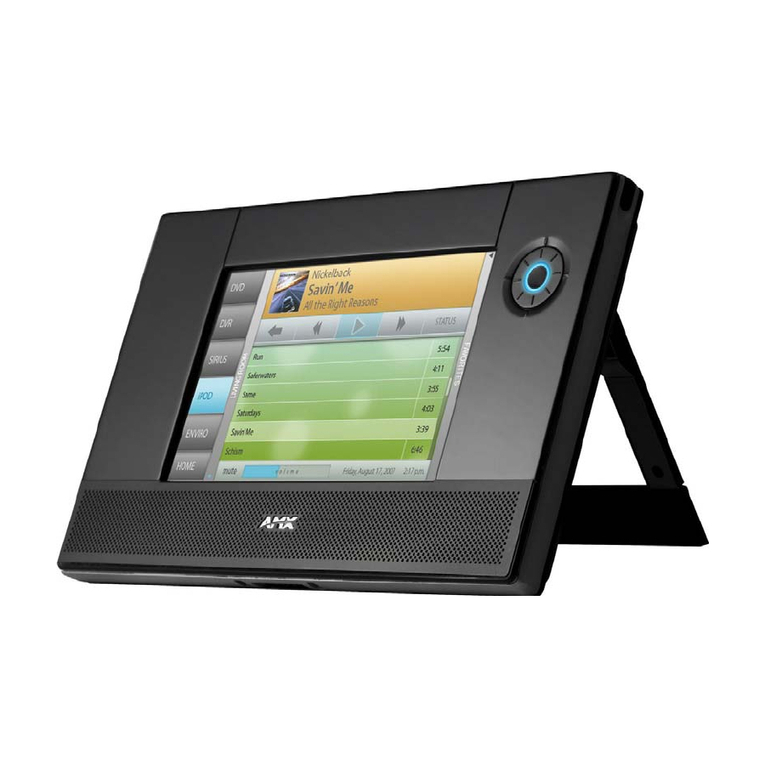
AMX
AMX Modero Viewpoint MVP-5200i Operation/reference guide
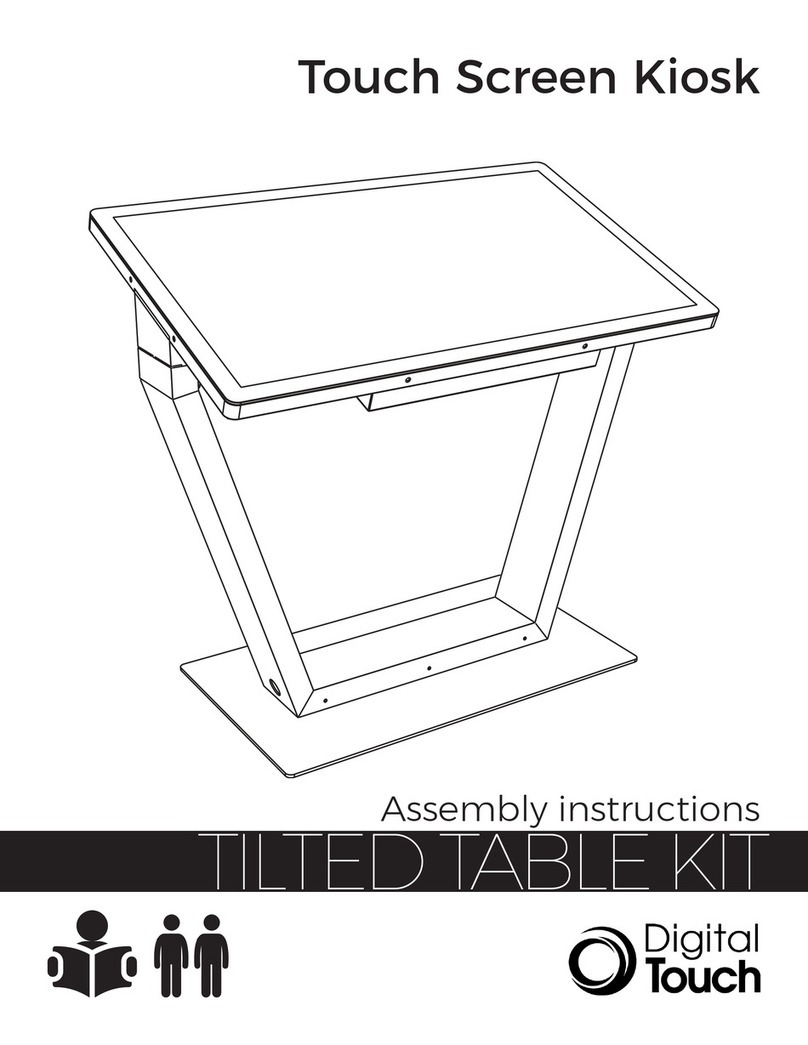
Digital Touch Systems
Digital Touch Systems TILTED TABLE KIT Assembly instructions
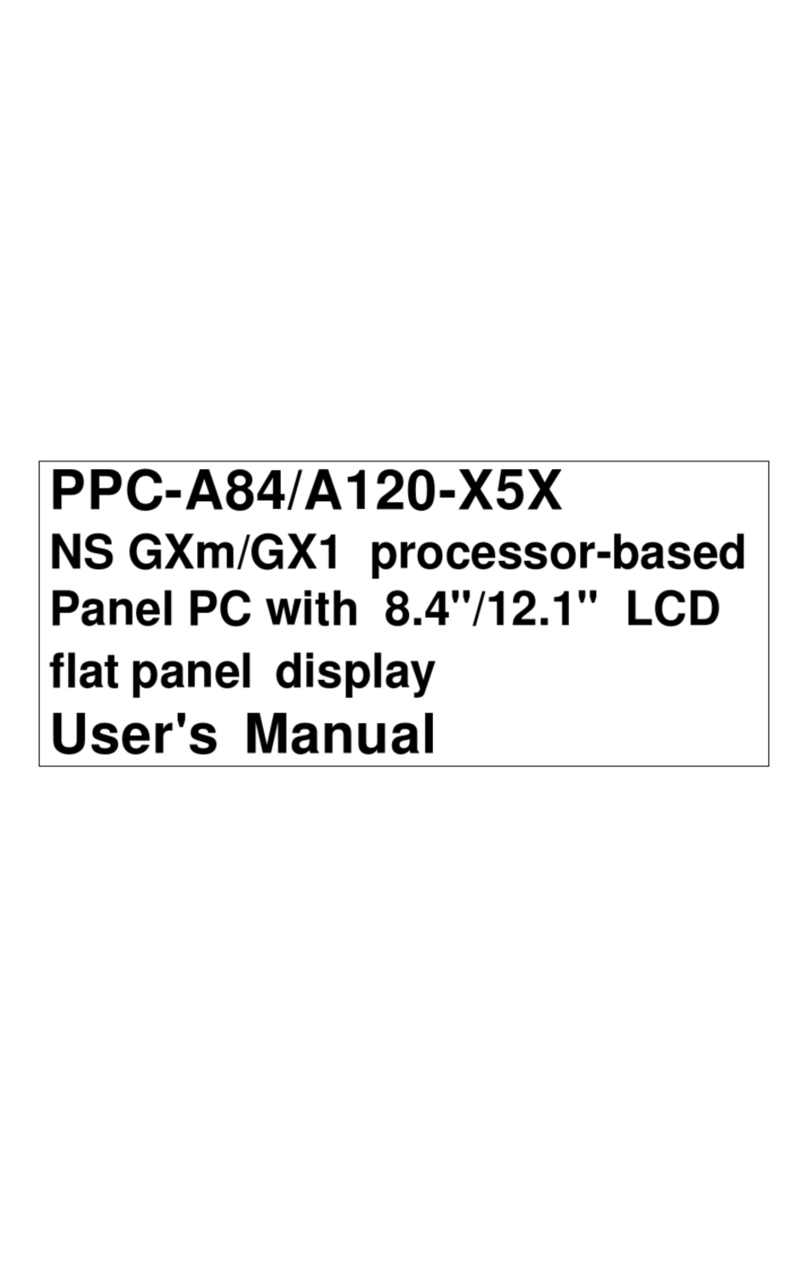
Advantech
Advantech PPC-A84/A120-X5X user manual
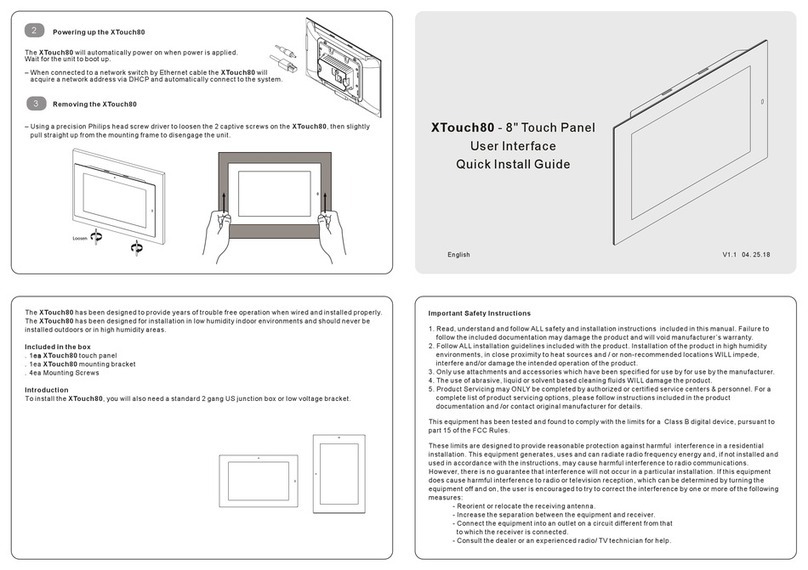
Xilica Audio Design
Xilica Audio Design XTouch80 Quick install guide
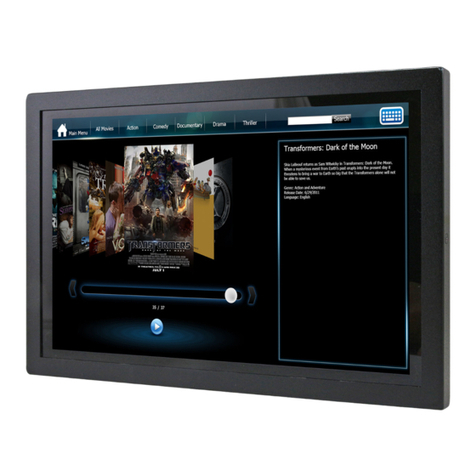
Avalue Technology
Avalue Technology SID-10WR1 Quick reference guide

